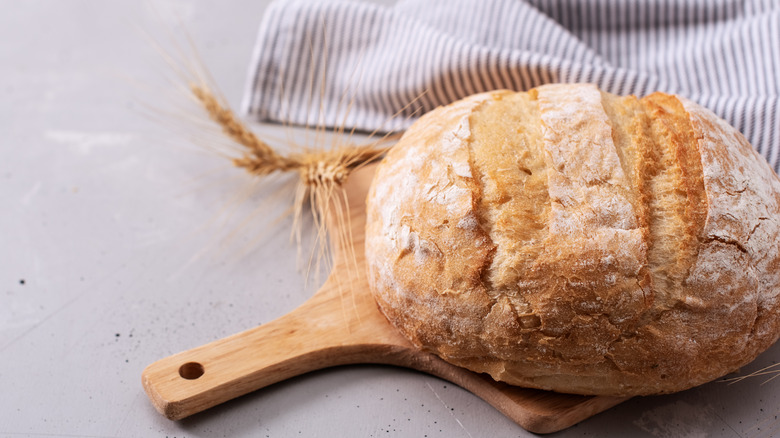The Reason Paul Hollywood Says You Should Never Put Bread Dough In A Proving Drawer
On "The Great British Baking Show," we regularly see contestants stick giant bowls of dough into their proving drawers. Proving is a function of an oven's warming drawer, meant to keep dishes warm or prove dough (aka allowing it to rise before baking, according to KitchenAid). If your oven has one of these drawers, you like to bake, and you watch "TGBBS," there's a good chance you've tried to get a nice rise in your dough this way. Unfortunately, this could be robbing your bakes of flavor. Proving drawers are not an ideal method for letting dough rise. Take it from an expert: "The Great British Baking Show" judge Paul Hollywood.
"Don't put bread dough in a proving drawer — put it somewhere cool," Hollywood told The Great British Food Awards. "We only use proving drawers on the 'Bake Off' so that contestants can get everything done in time. Put your mix somewhere cool with a bag over the top and wait for it to double in size slowly — again, that's where the [flavor] comes from!" He also adds that it's important to protect your dough from air exposure so it doesn't create an unwanted crust. But why should you put your dough somewhere cool, especially when a proving drawer is warm?
Why proving dough in cooler temperatures makes better bread
The fact that a proving function exists in an oven's warming drawer and that we see bakers use this from recipes to "The Great British Baking Show" may make it seem like warmer temperatures are the way to go for getting a good rise in your dough. But as expert baker Paul Hollywood pointed out to The Great British Food Awards, warm temperatures are really just a quick route to rising.
According to Knead Rise Bake, cooler temperatures are ideal for the ultimate taste and texture in bread — room temperature is better than a proving drawer, and if you've got the time, the refrigerator is actually best. This is because the colder it is, the slower the yeast works, which creates a long, stable rise, and that allows lovely flavors to develop. Again, you have to plan ahead and make sure you have the time. When Knead Rise Bake tested proving at room temperature versus the refrigerator, it was a difference between one and 12 hours. The trade-off was worth it though, with the refrigerator-proved dough creating bread that was heartier and more flavorful.
If you're in a rush, room temperature gets the job done, and it's not like there's anything wrong with the proving drawer. If it's good enough for "The Great British Baking Show," it's good enough for us, right? When you're dreaming of perfect, flavor-packed bread that nails all the crustiness, fluffiness, and spring, however, schedule accordingly and prove your dough as cool as you can.

